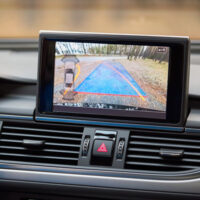The Risks Of Over-Reliance On Backup Cameras

Backup cameras have become an essential feature in many modern vehicles, providing drivers with a clear view of what’s behind them when reversing. Since their introduction, they have gained significant popularity, with many drivers relying heavily on them for parking and preventing accidents.
In fact, as of 2018, backup cameras are mandatory in all new vehicles in the U.S. While they are undoubtedly helpful in reducing blind spots, over-relying on them can lead to unexpected collisions. Should an accident involving poor camera usage occur, connect with a Miami personal injury lawyer.
Why Backup Cameras Are Not Always Reliable
Designed to be an aid, cameras are not a substitute for careful driving. Unfortunately, many drivers grow accustomed to relying solely on their backup cameras, forgetting to check their mirrors, windows, or physically turn around to ensure the area behind them is clear. This over-reliance can increase the risk of accidents, especially if the camera malfunctions or provides an incomplete view of the surroundings.
Some common issues that can arise with backup cameras include:
- Slipping out of place. If the tabs that hold the camera in place are broken or worn out, the camera can shift, distorting the view or making it impossible to see behind the vehicle correctly.
- Fogging or dirt buildup. Cameras that aren’t installed or maintained properly can fog up or collect dirt and grime. This obscures the image on the screen, giving drivers a false sense of security when backing up.
- Blind spots remain. While backup cameras cover a portion of the area behind your vehicle, they do not eliminate all blind spots. There are often areas to the side or directly behind your car that may not be visible on the camera, especially for larger vehicles.
Over-reliance on backup cameras can lead to drivers becoming complacent, neglecting other important safety measures when reversing. While these cameras provide a useful visual aid, they should never replace the traditional methods of checking surroundings. Drivers who rely solely on the camera may miss critical details such as pedestrians, cyclists, or other vehicles.
How to Use Backup Cameras Safely
To reduce the risk of accidents, it’s important to use backup cameras as a supplement to, not a replacement for, safe driving practices. Drivers should inspect backup cameras regularly to ensure they are clean, properly aligned, and free of any obstructions. Wipe the lens if necessary and have any damage repaired promptly.
Plus, when driving you should always check your mirrors and physically look over your shoulder when backing up. This will give you a fuller view of your surroundings, ensuring that you don’t miss any obstacles outside the camera’s range. When reversing, take your time and proceed slowly.
If you’ve been injured in a collision where a backup camera played a role, a skilled Miami personal injury lawyer can help you pursue the compensation you deserve.
Has a modern safety feature been part of your accident recovery claim? Have a conversation with the attorneys at Spencer Morgan Law. Call 305-423-3800 to book a confidential consultation.
